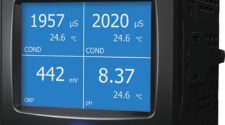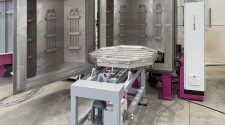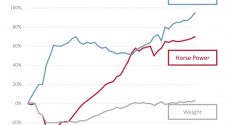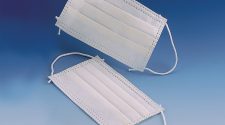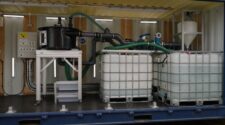As preparation for FiltXPO 2020 is underway, INDA, Association of the Nonwoven Fabrics Industry, has brought together a panel of experts in air and liquid filtration to discuss critical issues and emerging opportunities. The following summarizes key takeaways from a series of conversations with some of the leading minds in the filtration industry.
What’s Happening?
Pure water and clean air … It’s a simple desire by people in every part of the world, but one that’s sometimes difficult to obtain. Utilizing nonwoven filtration media can help solve daunting purification challenges and help create a healthier, safer and cleaner environment.
Filtration has become so important that it can be found almost everywhere. Nonwoven materials in the global filtration market continue to enjoy steady growth and are expected to reach 747,000 million tons by the end of 2020, according to INDA’s Worldwide Outlook for the Nonwovens Industry report.
As developing regions rapidly urbanize, filtration systems will continue to be needed along with the construction of water, power, communication and transportation systems. More vehicles on the roads also will contribute to the growth.
“The market is experiencing geographic expansion,” says R. Vijayakumar, filtration consultant and founder of Aerfil. “More people around the world want clean air and water. I see the most growth and new potential in Latin America, Africa and Southeast Asia. There is some new innovation and some interesting ways to solve old problems.”
Regulations
Environmental concerns leading to more stringent regulation for clean air and water are creating market opportunities for filtration technologies around the globe.
“Developing regions will continue to raise requirements for regulations which will drive the need for new products and growth,” says Jerry Snider, director of product development and product services for the Health, Hygiene, and Specialties Division, Berry Global, Inc. “The challenge for media manufacturers is not to let current capabilities get outpaced. We need to stay ahead of the evolution with new products and technology.”
Emissions
One of the biggest factors contributing to filtration growth is automotive emission regulations being implemented globally to reduce the discharge of carbon dioxide (CO2), sulfur oxides (SOx), nitrogen oxides (NOx) and particulate matter into the environment, says Taylor Sulmonetti, Ph.D., a chemical engineer with Exponent, a multi-discipline scientific engineering firm.
Europe’s emissions standard, Euro 6, aims to reduce levels of harmful car and van exhaust emissions in mass-produced petroleum and diesel cars. Both India and China are implementing their own stringent rules based on European regulations. New laws going into effect in 2020 and beyond are expected to bring a much-needed change in air quality. However, the trend toward electric vehicles in China and India could negatively impact the emission filtration market in the future.
Marine
The marine industry also is implementing new rules to significantly reduce the sulfur content of the fuel oil used by ships. Effective Jan. 1, 2020, the International Maritime Organization (IMO) will enforce a new 0.5 percent global sulfur cap on fuel content from the present 3.5 percent in response to heightening environmental concerns, contributed in part by harmful emissions from ships.
The IMO standards are creating short-term demand, says Ben Holcombe, market sales manager for the Energy Separation business at Alfa Laval, who is working directly with oil refineries and third parties to help them meet the new specifications.
Pharmaceutical
In the pharmaceutical industry, USP 797 in the U.S. provides standards to prevent harm to patients resulting from contaminated or improperly made compounded sterile preparations (CSPs). The regulations include regular particle monitoring and measurements to ensure sites with the most potential risk meet air cleanliness levels.
While this is at the high-end of the market, Vijayakumar foresees the potential for growth in the coming years for filtration companies to sell advanced products into this segment.
Carbon Neutrality
Beyond the numerous regulations, public pressure also is driving demand, according to Sulmonetti. While the United Nation’s Paris Agreement is very broadly defined in terms of decreasing emissions, companies are responding with efforts to either remove CO2 from the air or reduce their CO2 output because of strong consumer pressure for carbon neutrality.
Clean Energy
Another aspect is the desire for cleaner energy. Natural gas and shale gas are booming and filtration and separation is used upstream in the process to get rid of particulate matter, oil condensates and other impurities, says Sulmonetti.
“The innovative technologies within filtration and separation are aimed at reducing costs while meeting regulations and consumer demands,” Sulmonetti continued. “The main challenges with filtration and separation is obtaining high enough throughput along with maintaining high separation factors while using these new technologies.”
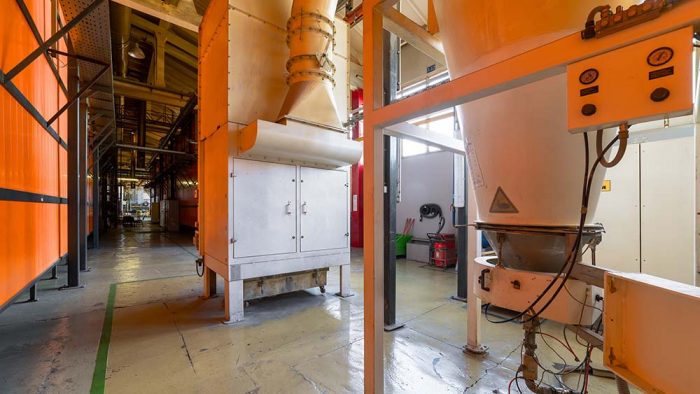
Standards & Testing
A division exists between the U.S. and the rest of the world over testing and standards for filtration products, says Behnam Pourdeyhimi, Ph.D., The William A. Klopman Distinguished Chaired Professor of Materials in the College of Textiles at North Carolina State University and founding executive director of The Nonwovens Institute.
“We need to speak the same language,” says Pourdeyhimi. “We need to be consistent because our customers are.”
To Charge or Not to Charge?
A key difference between the U.S. and Europe is the debate over the use of electrostatic charge on filtration products to provide higher efficiency. Electrostatic charge is being embraced in Asia and other parts of the world because of the performance it provides. Electrostatic air filters work similarly to a magnet. Formulated fibers generate strong static charges when air passes through them attracting airborne particles and holding them until the filter is cleaned.
Xin Feng, a research fellow with the Air Cleaning Techcenter (ACT) at the China Academy of Building Research in Beijing, tests of a lot of samples in electrostatic media and finds there are wide differences among manufacturers over the products’ ability to effectively maintain a charge. Expanded universal standards are needed that provide information about the contribution of the added charge on the filter, he says.
“The market really needs information about the total contribution of the charge in relation to the performance, as well as the ability of the media to keep the charge from being neutralized during the whole operation period so we can compare,” Feng says. “That’s very important to the manufacturer, the consumer and the lab.”
Growth Segments
Energy
Global power generation and regulations by governments of various countries are fueling growth in filtration for industrial and manufacturing applications. As manufacturers look to streamline their processes, higher levels of filtration is increasingly seen as a way to boost efficiency and reduce carbon footprints.
Oil and gas refining, petrochemical production and mining are among the areas where Alfa Laval is seeing increasing demand. In the higher-end chemical segment, international competition is driving requests for more efficient processes that deliver better product yields, Holcombe says. “Companies are investing in process improvements that have economic payoffs versus simply maintaining their operations as they have done in years past.”
The biggest challenge to implementing plant filtration improvements is limited engineering resources in house, especially at pulp and paper mills. “A lack of engineers at the plant level makes it difficult to run projects that could improve efficiencies and save costs,” Holcombe says.
Automotive
Nonwovens in the filters of vehicles help remove contaminants from engine, hydraulic, transmission and lubricating fluids. Cabin and intake filters absorb dust, debris, and other solid particulates that pose a threat to auto cylinders and pistons. Filtration systems also can improve the air-fuel mixture, helping the engine to function more efficiently, minimizing ignition problems, lowering fuel consumption, and reducing emissions.
In the U.S. and other mature markets, nonwoven filter media demand continues to be driven by improved economics, rising consumer confidence, and a desire by consumers for fuel-efficient, technologically advanced vehicles. Some large auto manufacturers also are raising the bar for indoor air quality in vehicle cabins, according to Pourdeyhimi.
Outside the Western world, there’s a huge market for filtration in automobiles, but cost is still a factor. In some countries, filtration systems for cars are handmade using old rags, says Vijayakumar. Countries in Asia and Africa have large potential for filtration of small motorcycle engines that create enormous pollution and outnumber the volume of cars on the roads.
Another opportunity for growth is transportation hubs, such as those for subways and electronic trains, where there is a need for air filtration systems, he says.
However, stressed trade relations between the U.S. and Asia have already had a major impact on the automotive segment slowing Asia’s annual growth from about 20 percent to 6 percent, and reducing production by manufacturers, says Pourdeyhimi.
Indoor Air
An increasing desire to improve health by reducing the dangers from dust, mold, bacteria, pollen and allergens is creating growth for high-performance filters that can capture submicron particles and improve the quality of air in homes, buildings and public spaces.
One of the fastest growing markets is air filtration in Asia. China is expected to lead the Asia Pacific air filtration market in the coming years. In China alone in 2015-16, the air filtration market increased at the rate of 150 percent, significantly outpacing the global air filtration market, according to Feng.
“The most critical areas for filtration and separation is energy and the environment,” he says. “What would happen if every Chinese person (1.5 billion people) consumed one extra kilowatt-hour of electricity? This would have a huge impact and burden on the energy supply market and to the environment, not just to China, but to global society.”
That is why there is such a big need for air flow resistance of filters to get lower and lower while delivering high performance, he says.
Biopharmaceutical
Filtration plays a critical role in public health and safety in hospital and operating room environments, medical applications such as dialysis and in the pharmaceutical industry.
In blood filtration, Berry’s Meltex polyester meltblown media is capable of removing white blood cells to decrease leukocytes that cause infection. The media performs based on size exclusion to remove white blood cells so the red blood cells can be used in transfusions, Snider says.
Today’s biopharmaceutical process has six to eight stages of high-level filtration to remove viruses and certain proteins, requiring very absorbent and selective filtration that can be quite expensive, says Pourdeyhimi.
The industry is looking at creating single-use nonwovens membranes that can capture a significant amount of proteins through surface modification of the filter, which would reduce costs and liabilities, he says.
Wastewater
Herve Buisson, senior advisor for innovation and technologies at Veolia Water, based near Paris, has seen the evolution of filtration for wastewater treatment from the first filters that used sand or anthracite as granular filter media to affordable finer filter media, such as micro- or ultra-filters, targeting fine colloids, pathogens, specific contaminants.
These new materials have enabled municipalities and various industries to develop wastewater reuse schemes, and minimize their water and environmental related risks and footprints, according to Buisson. Developments are ongoing to provide more robust, efficient, selective, and less energy intensive filtration options as novel higher final dryness filtration options, he says.
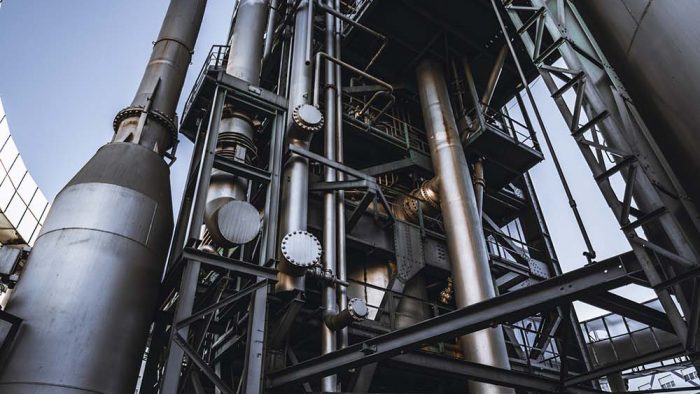
Steel Manufacturing
Developing new fiber solutions for filtration of hot gas in the steel industry is a high-value growth area, says Pourdeyhimi. The extremely high temperatures melt most materials, even flame-resistant Kevlar and Nomex, so other materials like meltblown glass could provide alternatives, he predicts.
Cannabis
Another interesting application is the need for filtration in the growing cannabis industry, as the market for marijuana and hemp becomes legal for recreational use in other countries and a growing number of states in the U.S.
“There are a lot of issues and complaints with odor,” says Tristan Tirone, founder of Canadian-based Flow Filters. “Cannabis can be smelled up to a mile away and there are regulations to ensure neighboring residences or businesses are not negatively affected. Air filtration is an important problem that needs to be solved. Current solutions are cumbersome, defunct in humid environments, and aren’t tailored for the application at hand.”
A lack of proper air filtration systems also can cause mold and mildew to grow on the plant, leading to product recalls and bad public relations that negatively affects the entire industry, says Tirone, a young entrepreneur who previously studied business at the University of Ottawa before founding the company in 2018.
Flow Filters will soon commercialize filtration systems for cultivation and consumer smokers.
Innovations Percolating
Nanofibers
Nanotechnology is likely the biggest emerging technology that will continue to impact the filtration industry, according to our panel of experts. Research is taking place on the academic side on separation projects that will drive future industry growth.
Nanofibers can be used to drive down scale and to enhance filtration selectivity. By modifying membranes and using hollow fiber membranes, gas molecules can selectively be filtered out of a process, resulting in higher purity, Sulmonetti says.
In the last five years, the use of nanofibers in filters in the U.S., Japan and China has increased, and Feng anticipates more research interest and commercial products will come into the market in the near future.
Reverse Osmosis
Reverse osmosis has become the key filtration process in desalination, industrial process waters, municipal and industrial wastewater reuse, and point-of-use and point-of-entry devices, according to Buisson.
Controlling biological growth inside reverse osmosis modules remains a key challenge to make the process more cost effective and robust. Putting silver or another nanoparticle on the surface of the filter can reduce its affinity to microorganisms, controlling biofouling and extending filter life, says Exponent’s Sulmonetti.
Recyclable Filters
Over 99 percent of filters are discarded without recycling or reuse, creating an environmental burden, Feng says. While the issue hasn’t gotten a lot of attention, he predicts this will be important in the years to come.
Microfluidics
Buisson has seen a lot of progress in material science in filtration for ultra-clean water and sludge slurries, or concentrated sludge.
“We can harness the power of nanotechnology and microfluidics to make a big leap in performance,” he says, predicting a new generation of filters that will have better performance. He is seeing microfluidics filters that can be designed with 3-D printers being sold by start-ups that have interesting potential.
Hybrid Filtration Systems
Another exciting area, Sulmonetti says, is hybrid filtration systems that combine a nonwoven with an absorbent or inorganic material like activated carbon. The nonwoven filters out the large particulate matter, while the absorbent embedded into the structure removes chemical impurities, resulting in a cleaner end product.
Selective Filtration
Surface modifications of filters which is prevalent in pharmaceuticals can be implemented into a lot of different sectors, Sulmonetti says. By including a charge imbalance or functional group onto a filter, specific components can be selectively filtered out. This could potentially be used to capture CO2 from flue gas or air, creating a cleaner environment.
Buisson would like to see more filters that use chemistry to selectively remove some components while maintaining others that are wanted or “filter for purpose.”
Smart Filters
Partnerships between filtration and water companies also could result in more intelligent filters with sensors that can capture data on usage and help run plants. Smart filters with sensors also can be used to measure biological activity and growth and minimize the problems of biofouling in water, Buisson says.
With the Internet of Things (IoT), self-operating wastewater plants with smart filters that provide diagnostics could be the wave of the future in developing countries, he predicts.
Learn More
INDA’s upcoming FiltXPO 2020, North America’s only exhibition and technical conference dedicated exclusively to filtration and separation, will feature in-depth presentations created for and curated by renowned international experts and a show floor packed with exhibitors featuring the latest products and processes.
To learn more about these hot topics, mark your calendars for FiltXPO 2020, Feb. 26-28, at Chicago’s Navy Pier. Sessions will focus on air filtration, nanofiber filter media, membranes and separation technologies, biopharmaceuticals, micro/macro modeling, process water filtration, and more. For the full line up of speakers and to find out how you can participate in FiltXPO, visit wwww.filtxpo.com.
Sandy Frinton is a frequent writer on industry issues within engineered fabrics sectors with 25 years of experience in journalism and PR.
Subject Matter Experts
The following panel offered up insights for this article on what they see as the trends that will shape the future of filtration. Their feedback offers a taste of what will be covered during INDA’s upcoming FiltXPO conference and exhibition, Feb. 26-28, at Chicago’s Navy Pier. Learn more at filtxpo.com.
Hervé Buisson
Senior Advisor – Innovation and Technologies
Veolia Water Technologies
herve.buisson@veolia.com
Xin Feng
Research Fellow
Air Cleaning Techcenter (ACT), China Academy of Building Research
xfengjbai@hotmail.com
Ben Holcombe
Market Sales Manager, Energy Separation
Alfa Laval
Ben.Holcombe@AlfaLaval.com
Behnam Pourdeyhimi, Ph.D.
William A. Klopman Distinguished Professor
Executive Director, The Nonwovens Institute,
North Carolina State University
bpourdey@ncsu.edu
Jerry Snider
Director of Product Development and Product Services
Health, Hygiene, and Specialties Division
Berry Global, Inc.
jerrysnider@berryglobal.com
Taylor Sulmonetti, Ph.D.
Associate, Thermal Sciences
Exponent
tsulmonetti@exponent.com
Tristan Tirone
Founder
Flow Filters
info@flowfilters.com
R. Vijayakumar, Ph.D.
Consultant in Chief
Aerfil
Vijay@aerfil.com








